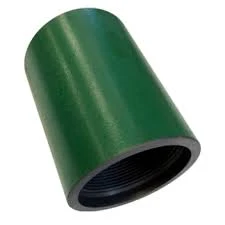- Afrikaans
- Albanian
- Amharic
- Arabic
- Armenian
- Azerbaijani
- Basque
- Belarusian
- Bengali
- Bosnian
- Bulgarian
- Catalan
- Cebuano
- Corsican
- Croatian
- Czech
- Danish
- Dutch
- English
- Esperanto
- Estonian
- Finnish
- French
- Frisian
- Galician
- Georgian
- German
- Greek
- Gujarati
- Haitian Creole
- hausa
- hawaiian
- Hebrew
- Hindi
- Miao
- Hungarian
- Icelandic
- igbo
- Indonesian
- irish
- Italian
- Japanese
- Javanese
- Kannada
- kazakh
- Khmer
- Rwandese
- Korean
- Kurdish
- Kyrgyz
- Lao
- Latin
- Latvian
- Lithuanian
- Luxembourgish
- Macedonian
- Malgashi
- Malay
- Malayalam
- Maltese
- Maori
- Marathi
- Mongolian
- Myanmar
- Nepali
- Norwegian
- Norwegian
- Occitan
- Pashto
- Persian
- Polish
- Portuguese
- Punjabi
- Romanian
- Russian
- Samoan
- Scottish Gaelic
- Serbian
- Sesotho
- Shona
- Sindhi
- Sinhala
- Slovak
- Slovenian
- Somali
- Spanish
- Sundanese
- Swahili
- Swedish
- Tagalog
- Tajik
- Tamil
- Tatar
- Telugu
- Thai
- Turkish
- Turkmen
- Ukrainian
- Urdu
- Uighur
- Uzbek
- Vietnamese
- Welsh
- Bantu
- Yiddish
- Yoruba
- Zulu
Aluminum Pipe Connectors and Accessories for Reliable Plumbing Solutions
Aluminum Pipe Couplings and Fittings Essential Components in Modern Plumbing and Construction
Aluminum pipe couplings and fittings are critical components widely used in plumbing, construction, and various industrial applications. As lightweight yet strong materials, aluminum fittings offer numerous advantages over traditional materials such as steel and plastic. This article explores the various types, benefits, and applications of aluminum pipe couplings and fittings.
Understanding Aluminum Pipe Couplings and Fittings
Aluminum pipe couplings and fittings serve to connect pipes, enabling fluid or gas transfer within a system. Couplings are used to join two identical pipes, while fittings help redirect or change the flow direction, connecting different pipe diameters, or facilitating access to a piping system for maintenance. Common types of aluminum fittings and couplings include elbows, tees, adapters, reducers, caps, and flanges.
Aluminum is chosen for these applications due to its unique properties. It is not only lighter than many alternatives but also resistant to corrosion, making it an excellent choice for both indoor and outdoor environments. The lightweight nature of aluminum also facilitates easier handling and installation, reducing labor costs and improving overall efficiency.
Advantages of Aluminum Pipe Couplings and Fittings
1. Lightweight Nature Aluminum’s low density allows for easy maneuverability during installation. This characteristic is particularly beneficial in large-scale construction projects, where cumbersome materials can complicate logistics.
2. Corrosion Resistance Unlike steel, which can rust and degrade when exposed to moisture, aluminum naturally forms a protective oxide layer that prevents corrosion. This durability extends the lifespan of piping systems and reduces maintenance costs over time.
3. High Strength-to-Weight Ratio Aluminum exhibits an impressive strength-to-weight ratio, which means products can maintain structural integrity without adding excessive weight. This property is essential in applications where support structures are also burdened with other loads.
aluminum pipe couplings and fittings

4. Versatility Aluminum fittings are compatible with various piping materials, including plastic and steel, making them versatile choices for diverse plumbing systems. This adaptability allows for easy replacements and upgrades in existing installations.
5. Recyclability One of the more environmentally friendly qualities of aluminum is its recyclability. Not only is new aluminum derived from recycled materials, but recycling aluminum requires significantly less energy compared to producing new aluminum from ore, contributing to sustainable practices in manufacturing.
Applications in Various Industries
Aluminum pipe couplings and fittings find their place in numerous industries, from residential plumbing to large-scale industrial applications. In the automotive sector, aluminum fittings are often used in fuel and air systems because of their lightweight and resistant nature.
In construction, aluminum is a popular choice for HVAC systems where efficient airflow and minimal weight are crucial. The shipping and marine industries also benefit from aluminum connections, as the material's resistance to corrosion in saltwater environments is of paramount importance.
Moreover, in firefighting, aluminum fittings can withstand high pressures and extreme temperatures, making them suitable for fire suppression systems. With the rise of renewable energy technologies, aluminum fittings are being increasingly used in solar panel installations and wind turbine assemblies.
Conclusion
Aluminum pipe couplings and fittings are indispensable in today’s infrastructure, offering a combination of durability, lightness, and resistance to corrosion. Their widespread application across various industries highlights their versatility and reliability. Whether you're working on plumbing, construction, or specialized industrial projects, the choice of aluminum fittings guarantees an efficient and long-lasting solution. As technology progresses, these components will undoubtedly continue to evolve, paving the way for more sustainable and innovative uses in the future.
-
Tubing Pup Joints: Essential Components for Oil and Gas OperationsNewsJul.10,2025
-
Pup Joints: Essential Components for Reliable Drilling OperationsNewsJul.10,2025
-
Pipe Couplings: Connecting Your World EfficientlyNewsJul.10,2025
-
Mastering Oilfield Operations with Quality Tubing and CasingNewsJul.10,2025
-
High-Quality Casing Couplings for Every NeedNewsJul.10,2025
-
Boost Your Drilling Efficiency with Premium Crossover Tools & Seating NipplesNewsJul.10,2025







